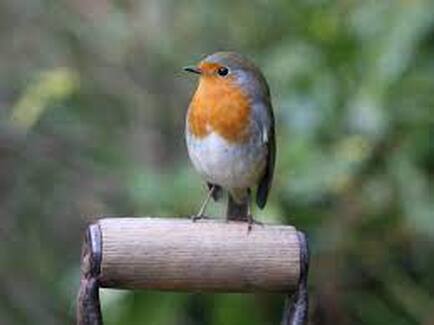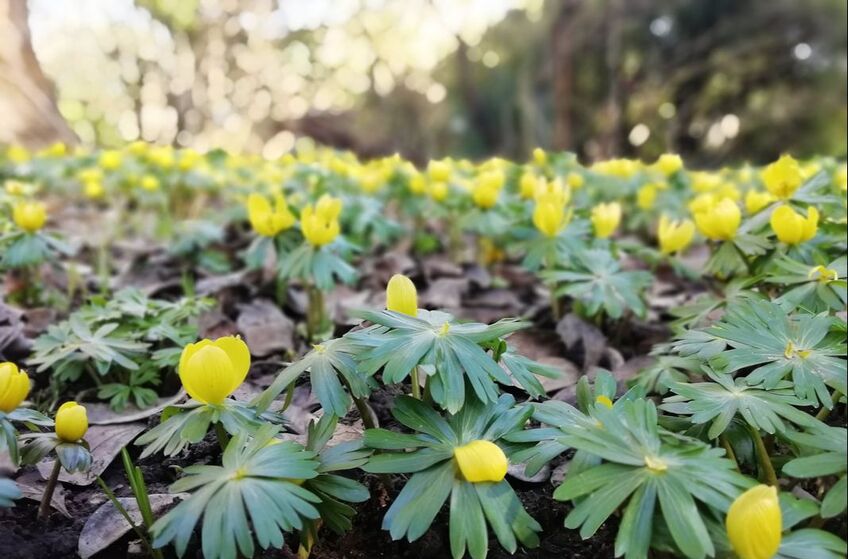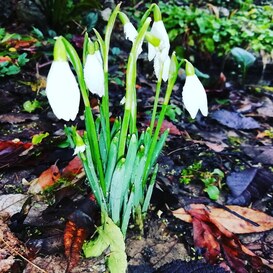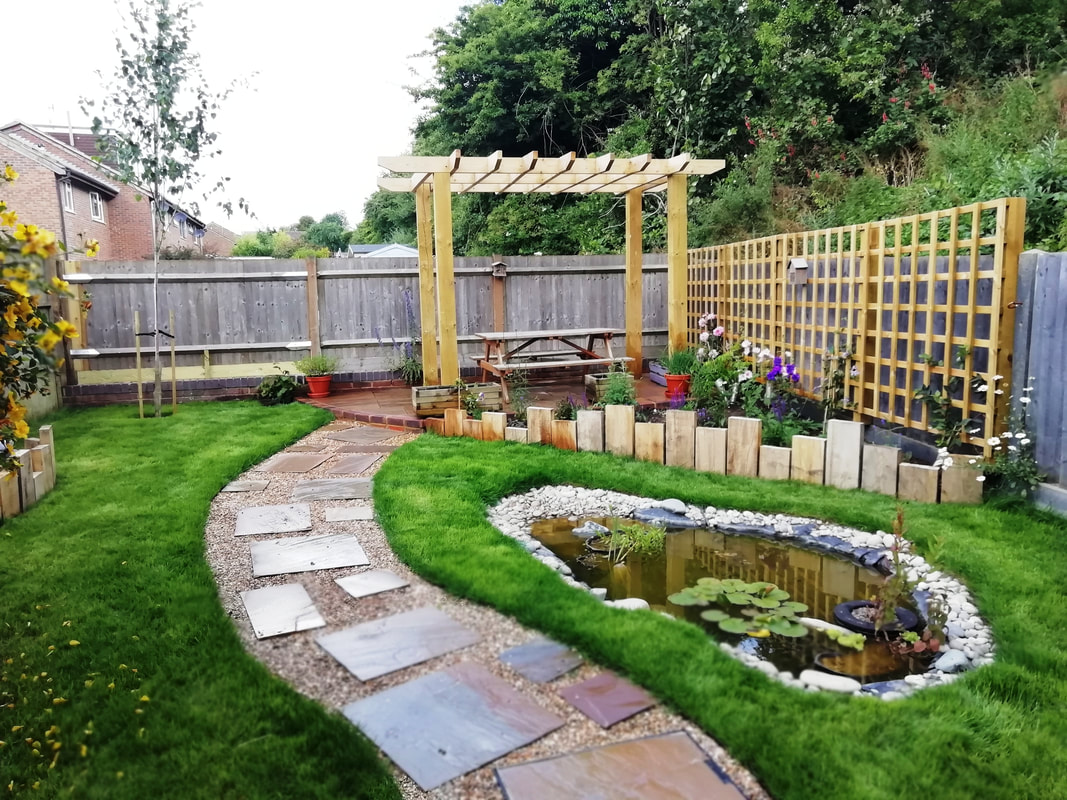 TOP 10 BIRDS, most common birds in UK (From: The Big Garden Birdwatch 2020)
Robin, Wild Birds/Alamy Birdfeeders & Bird Boxes: What birds need in your garden: It is great to regularly supply a good variety of suitable bird foods like raw unsalted peanuts, seed mixes and fat balls. Be aware of the placement of the feeder- in an open area, on a paving or grass is possibly best if you can* Birds like to feel safe from predators, so for any placement of feeders or bird boxes they need to be safe from the local cat population and sparrow hawks or at least be able to see them coming. Place bird boxes as high as possible, face the box between north and east, thus avoiding strong sunlight and the wettest winds. Make sure that the birds have a clear flight path to the nest without any clutter directly in front of the entrance. Avoid having feeders over garden beds and borders as many of the spilt food will start to sprout and you’ll have the extra job of weeding them out, which takes longer than sweeping up. Natural feeding & foraging habits: Birds are also attracted to eat more in your garden than just the bird food-. This is a fantastic way to help for pest control- they will dig for worms and chafer grubs & leatherjackets in the lawn, they will forage for aphids and other insects in perennials, shrubs and trees. A real treat is berries in the autumn and winter. They also love to have a wildlife pond, big enough with shallow areas with flat rocks to drink easily from, bird baths with clean water to drink from and clean themselves in Not tidying too much and leaving cutting back old growth & seed heads, leaf litter etc until spring is also a great way for leaving habitats for birds to forage and as a bonus are places for beneficial insects* to overwinter in, remaining in your garden to emerge the following spring. *Beneficial insects are those that help to not only pollinate, but to help control or eradicate excess harmful insects like aphids.Eg ladybirds, lacewings & hoverflies. (I will do another article soon on these.) Plant types to attract birds & other wildlife: Creating biodiverse habitats
If you would like more information on having your own wildlife garden designed, with a tailored planting plan that can include multiple ways to attract an abundance of wildlife, please get in touch: [email protected]
0 Comments
 Garden Design: It has been a very busy spring and summer is already here! I’ve designed and transformed three new gardens into beautiful, usable, wildlife friendly sanctuaries. The gardens now have wildlife ponds and lots of interesting plants ranging from beautiful instant impact small native and non native trees to wildflower meadows. I have also completed half a dozen other interesting tailored planting schemes including a coastal courtyard, exposed seafront roof terrace and a pretty back garden with extra late summer interest. I turned my latest shaded north facing garden into an architectural desert style hot colour themed garden (I do love a challenge!) All have tailored planting schemes to suit the site conditions, with colours and styles chosen by the clients; I’m mindful of providing interest, texture and colour through the seasons.  An instalation of raised beds, wildlife pond, shady beds & wildflower meadow lawn to come. An instalation of raised beds, wildlife pond, shady beds & wildflower meadow lawn to come. A group of clients, who recommended me to their neighbours, told me that their gardens had been Sadie’d! Love it. Wildlife: It’s been brilliant to get feedback and photos from these and previous clients who have within weeks seen visiting insect and bird life. Another within a year already has nesting birds, a visiting hedgehog, slowworms, lots bird & insect life, along with the more unusual horse and even a sparrow hawk. The horse was a lovely surprise; he was obviously tempted by the more bio diverse greener grass and broke through his electric fence, crossed a stream and wondered into the garden to eat some of the wildflower meadow and lawn. I've also had hedgehogs & slow worms living in another garden, which makes me very aware of having a light touch. Leaving the leaf litter, and wood piles at the back of borders, this is also great for soil health and mycorrhizal fungi. The wildlife ponds had damselflies visiting within a month and even a sparrow hawk and other bird visiting & using the larger pond. One of my favourite sounds in a garden is the frog mating call. Wildflower meadows. I’ve installed wildflower meadows from plug plants into a few existing lawns, and into a new lawn, as smaller areas were wanted, rather than the whole lawn. I have used site specific plants that can be for shade, sun, chalk, and even low growing options.
If you would like more information on how to get more from your garden, want a new planting scheme this autumn or are interested in a re-design of part or your whole garden then please get in contact:
Email:[email protected]; Tel: 07881992762. Or see my website link: www.plantpeople.org  Time to start thinking about the garden. With some stunning sunshine and blue sky days, the snowdrops, aconites and hellebores are appearing. There are also many other heavenly scented winter flowering shrubs such as Daphne, Sarcococca, Wintersweet and Mahonia. This is the time to start nourishing your garden in preparation for the year ahead. Get a load of organic well rotted manure or use your own good compost to mulch your whole garden with. Spreading in 2-3” thick especially around all the Roses, fruit trees and shrubs. Mulching with organic matter is a brilliant way to not only feed your garden, it also helps suppress weeds and aids in keeping the moisture in over the warmer months.   It is also a great opportunity to plan any new designs or planting schemes, to create a more useable outdoor space that is also wildlife friendly. Getting the landscaping done in early spring, ready for planting in mid to late spring. If you would like to redesign your garden or replant any aspect of your garden, please do get in touch. I specialise in user friendly wildlife gardens & tailored planting schemes for those difficult to plant areas such as sun, shade, coastal salt winds along with different soil types. Top tips:
1. Last chance to prune your Roses, apple & pear trees, grape vines, wisteria & autumn raspberries. 2. Cut back your winter hedges, before birds start to nest. 3. Refresh any winter displays by deadheading the flowers and adding in spring bulbs and early spring flowers such as Primroses and Hellebores. 4. Time to plant any bare rooted Roses, fruit and shrubs. 5. Start to clear the old woody perennial growth from last year, and leave in bundles like with wood piles at the edges of your garden or add to compost bin, mindful still that it may contain any hibernating insects or larvae. 6. Plan your edible areas, crop rotation and companion plants, buy seeds* and start to sow Chilli’s and peppers. * Check out any local seed swaps or independent seed suppliers.  Sowing Seeds: Help me to help you.. Spring is just beginning to show itself with dwarf Iris, Hellebores and SNOWdrops actually in the snow this weekend! There are lots of amazingly scented plants in full bloom such as Daphne, Wintersweet, Mahonia and Viburnum and the gorgeous but usually unscented Camellia’s and Witch hazel are also showing off. I am aware that this year there are lots of people who are just at the beginning of their gardening journeys. So if you're planning to grow your own flowers, fruit, herbs and veg for the first time, or would like too revamp your whole garden with a new design. I can help. I've designed everything from small balconies to estates, shady woodland areas to exposed communal gardens and have tackled some really tricky pests. So if you have any poor areas or poorly plants give me a call. I have some great reviews on Check-a-Trade and my own website shows a wide variety of the gardens and difficult site conditions I have worked with. I will be honest. I do need to earn a living and while I love to share information and answer your tricky questions I need to charge an hourly rate if I'm to keep my cat in the luxury he's become accustomed too. However, my rates aren't excessive and are here on my website. I would like to hear from you, about how I can help you. What would help you? What information do you need and in what format? A zoom video call? As long as your signal is ok in your garden, we can do a consult. Alternatively, I can also do a garden site visit, at a distance, in Sussex. All information is covered on my website: www.plantpeople.org Last but not least we all love a bargain, so 10% off the first consult. If you introduce me to any of your friends and family, you both get 10% off a consult/ advice & information session/ 1:1 garden lesson. I look forward to hearing from you.  Plants are like us in that they need regular good food and water to grow, flourish and stay alive. If we don’t get these things we don’t feel good, get stressed, get ill, eventually get very sick and then die. We all need sunlight and air. Technically plants get what they need from sunlight, photosynthesis, air and water. The plants roots absorb water from the soil and this should contain the extra nutrients they need, a bit like what our stomach and intestinal system does for us. For plants it is very important to create and nurture the symbiotic relationships of a rich soil biome, full of microscopic insect life and a healthy mycorrhizal fungi network. When plants get sick, abnormal discolouration of their leaves show various mineral deficiencies. If these are not remedied they become weak and susceptible to secondary infections from pests and diseases. E.g. Aphids, Rust or Black spot. Organic liquid feeds can be used as a quick fix but I would advise you not to use any synthetic chemical based feeds like miracle grow. It’s like if we eat too much processed food; bad fats, too much sugar etc have a negative effect on us. The plants will respond initially with extra green growth from high doses of Nitrogen but the growth will be weak. The worms and other microscopic insect life are adversely affected and the soil health is depleted and damaged by using these chemical feeds, as well as any strong chemical pesticides and herbicides. We know we need good organic, unprocessed whole foods with a balance of good proteins, fats and slow release carbohydrates for our long term good health. The plants and the soil need a balance of good nutrients. We are all then able to become stronger, more resistant, less stressed and more resilient to illness / pests and diseases. I find it interesting to reflect on our current food systems and the old saying ‘You are what you you eat’. If you would like to have healthy thriving plants, edibles and a good soil biome in your own garden please get in touch. Over winter is an ideal time to start this process. Sadie Honeybun, [email protected], M: 07881992762.  So this is my first ramblings! Welcome to my world of plants... Autumnal delights: Misty mornings of dew laden spider webs was a spooky sight this week and made me excited at the thought of magical Halloween and beautiful bonfire nights. My other joy this week was eating my first ripe pear (Doyenne du Comice variety) that I grew! I am still harvesting second year cordon & espalier apples & pears, autumn raspberries, tomatoes* - very late going in, golden courgettes & chard which self sowed ...Yum! *Inspired to make lush spicy tomato and even better green tomato chutney with the 12kg of tomatoes! So my garden is very down to earth and is slightly neglected on the surface. (I did book the time in early spring to weed and put down three tons of manure on all the garden.) As I garden all week for others I rarely get time /energy to make mine look as beautiful as theirs! Occasionally at weekends I cut the grass, weed and plant new treasures. Ok this will make you laugh I am not a fan of grass or perfect lawns! It's just an annoying green carpet that keeps growing and needs cutting regularly, Invades beds and gets weeds in it. I don't do perfect lawns or perfect anything in my OWN garden - Nature is perfect in its imperfections, and weeds in a lawn add biodiversity and attract wildlife. Like us plants get a whole host of things that affect their looks, and if it's not going to kill us, we can learn to live with it... As long as they are the right plant in the right place, planted well, fed and watered properly, occasionally a bit of tlc and they will give it their all! Have a great weekend & enjoy your garden. Next time: My crazy front garden and pet hates... |
Author: A gardener and artist, sharing inspirationArchives
February 2023
Categories
All
|










